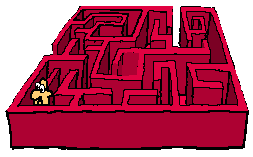 Vendors are pumping the idea of service-oriented architecture (SOA) like there is no tomorrow, and for good reasons. But to businesses, SOA sounds like some hyper-techie thing that normal people cannot understand, and do not want to try.
Vendors are pumping the idea of service-oriented architecture (SOA) like there is no tomorrow, and for good reasons. But to businesses, SOA sounds like some hyper-techie thing that normal people cannot understand, and do not want to try.According to a new survey, more than 50% of business people have no idea what SOA is about.
And that is good news! Really.
SOA is a good thing, but it focuses on the IT layer of a business. It is a concept by and for IT architects, not business people. So it is no suprise that business doesn't get it, or buy it yet.
SOA is the future of IT architecture. In simple terms, it aims to add flexibility to your technology infrastructure. As an approach to design, it allows you to replace components without replacing all the hardware and software you already bought or built. It allows you to "re-use" components, or allow others to use them as a shared service or system. It gives you business flexibility so your back office processes and front-end services can evolve without needing to entirely replace your installed base of IT. SOA helps you extend the life of your existing infrastructure, increasing the ROI of your capital investment in IT.
Sounds good, right? So, what's the problem?
The problem is SOA makes a bad situation worse within many companies. The problem is IT driving business decisions. It should be the opposite. Business needs driving IT decisions. The focus should be the "SO" not the "A."
A better approach is to integrate a clear service-orientation into all levels of a business, not just its IT. SOA needs to move up "the stack" -- defining "design" of services, business processes and information management, in addition to the technology layer. We need to talk about SOA without mentioning IT or architecture or any other technology lingo. Service orientation is a business proposition. And that is a converation that CEOs, CFOs and business managers can engage in.
If you need an enterprise architect in the room to translate, the discussion is on the wrong track.







No comments:
Post a Comment